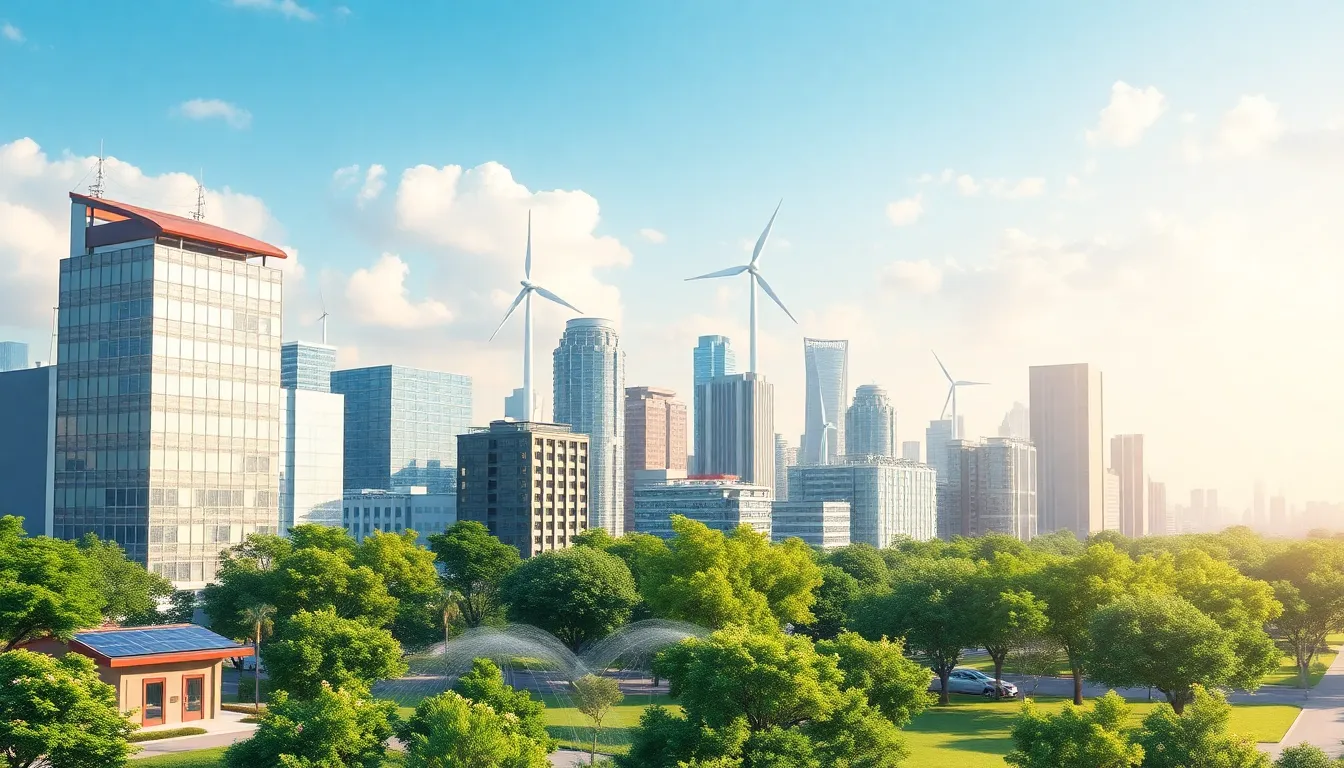In a world where the climate crisis feels like a plot twist in a bad movie, new sustainable technology is stepping in as the unexpected hero. From solar panels that look like modern art to biodegradable materials that even Mother Nature would approve of, these innovations are transforming how we live and interact with our planet.
Table of Contents
ToggleOverview of New Sustainable Technology
New sustainable technology represents a critical advancement in addressing the climate crisis. Innovations such as solar panels designed with aesthetics in mind allow homeowners to embrace renewable energy without sacrificing visual appeal. Biodegradable materials revolutionize packaging and consumer goods through environmentally friendly alternatives. Electric vehicles continue to gain traction, reducing reliance on fossil fuels and lowering greenhouse gas emissions.
Wind energy technology has seen significant growth, with turbine designs improving efficiency and reducing costs. Geothermal energy provides a reliable, steady power source by utilizing the Earth’s heat. Smart grids enhance energy distribution, enabling efficient energy use and reducing waste.
Agricultural technology employs sustainable practices to increase food production while minimizing environmental impacts. Vertical farming utilizes urban spaces to grow food, decreasing transportation emissions and enhancing local accessibility. Hydroponics, a soil-less cultivation method, increases yield and optimizes resource use.
Waste management technology focuses on recycling and waste-to-energy processes. Advanced composting systems turn organic waste into useful products, while anaerobic digesters convert waste into biogas, generating energy and reducing landfill use.
Water purification innovations tackle global water scarcity issues. Desalination plants convert seawater into potable water, providing solutions in arid regions. Rainwater harvesting systems promote water conservation by capturing and storing rainwater for future use.
These technologies collectively shape a sustainable future, aligning innovations with the urgent need for ecological balance. Adoption of new sustainable technologies leads to improved quality of life and a better relationship with the planet.
Key Innovations in New Sustainable Technology

New sustainable technologies pave the way for significant environmental advancements. These innovations tackle pressing issues while enhancing everyday life.
Renewable Energy Solutions
Solar energy remains a major focus, with new solar panel designs integrating seamlessly into building aesthetics. Wind energy technology has become more efficient, with advanced turbine designs maximizing energy production. Geothermal systems harness Earth’s heat, providing a reliable energy source with minimal environmental impact. These renewable energy solutions collectively reduce dependence on fossil fuels.
Water Conservation Technologies
Innovative water conservation methods include smart irrigation systems that optimize water usage for agriculture. Rainwater harvesting systems capture precipitation, providing a viable supplemental water source. Desalination advancements make seawater drinkable, significantly expanding freshwater resources. These technologies play a vital role in addressing global water scarcity challenges.
Waste Management Innovations
Recycling technologies are evolving, transforming waste into reusable materials. Energy generation from waste processes harnesses landfill output to create clean energy. Composting systems enhance organic waste processing, enriching soil while reducing landfill contributions. These waste management innovations effectively minimize environmental footprints while promoting circular economy practices.
Impact of New Sustainable Technology
New sustainable technology significantly influences environmental and economic sectors. These innovations promote greener practices and enhance resource efficiency.
Environmental Benefits
New sustainable technologies reduce greenhouse gas emissions, directly combatting climate change. Solar panels and wind turbines produce clean energy, lowering reliance on fossil fuels. Biodegradable materials lessen pollution and waste accumulation. Enhanced agricultural practices, like vertical farming, optimize land use, minimizing habitat disruption. Innovative water purification methods, such as desalination and rainwater harvesting, provide access to clean water while conserving natural resources. These advancements contribute to ecosystems’ restoration and biodiversity enhancement.
Economic Advantages
Economic benefits arise from implementing new sustainable technologies. Energy-efficient systems cut operating costs for businesses and households. The renewable energy sector generates millions of jobs worldwide, driving economic growth. Sustainable practices often attract investments, as consumers increasingly support environmentally friendly initiatives. Enhanced waste management technologies create valuable resources from trash, improving profitability. Innovations in agriculture boost food security, ensuring stable supply chains and reducing costs for consumers. These factors collectively foster resilient economies while supporting sustainable development.
Challenges and Limitations
New sustainable technologies face several challenges that can hinder their effectiveness and widespread adoption. Understanding these obstacles helps stakeholders navigate the evolving landscape.
Technological Barriers
Complexity in integrating new technologies creates significant hurdles. Manufacturers often encounter issues with compatibility, making deployment difficult across existing infrastructures. Additionally, limited scalability presents obstacles for smaller firms striving to compete with established players. High initial costs discourage many companies from adopting innovative solutions, despite their long-term benefits. Reliability concerns further complicate technology rollout, with potential users hesitant to invest in untested systems. Finally, a lack of skilled labor limits technical expertise, impeding development and maintenance of sustainable technologies.
Policy and Regulation Challenges
Regulatory frameworks often lag behind technological advancements, creating confusion and hindering growth. Governments may impose outdated regulations that fail to account for creative solutions like renewable energy products or waste management systems. Varying policies across regions complicate compliance for businesses operating in multiple locations. Inadequate incentives can also slow down investments in sustainable practices, discouraging companies from making the transition. Unclear guidelines for funding and support further exacerbate these issues, leaving innovators without the necessary resources to bring their ideas to life.
The rise of new sustainable technologies marks a pivotal moment in the fight against climate change. These innovations not only offer practical solutions but also inspire a shift in how society interacts with the environment. By embracing advancements in clean energy, agriculture, and waste management, individuals and businesses can contribute to a healthier planet.
While challenges remain in terms of adoption and scalability, the potential benefits are immense. As sustainable technologies continue to evolve, they pave the way for a more resilient economy and a sustainable future. The commitment to these innovations signals hope for a world where environmental stewardship and economic growth go hand in hand.



